Brown-Butter Mochi Muffins
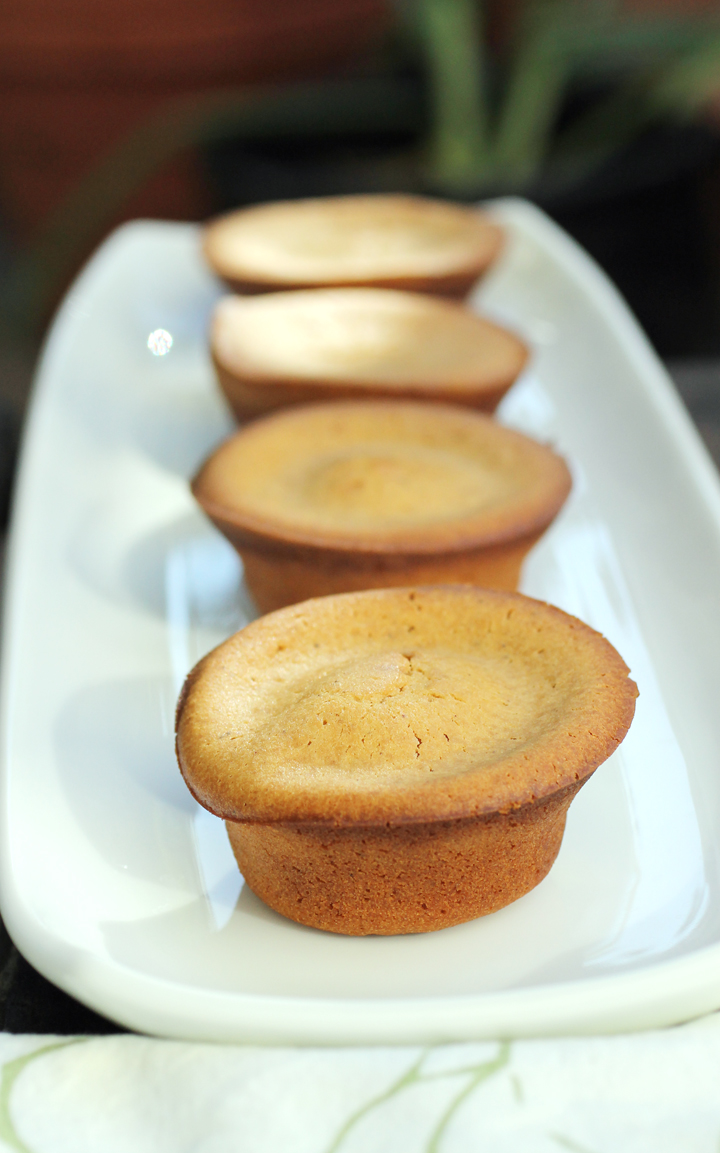
Made with dark brown sugar, coconut milk, evaporated milk and mochiko flour, these little treats are gluten-free.
Anyone who has followed my blog for awhile knows about my love for butter mochi.
I can’t resist this Hawaiian baked good made with glutinous rice flour, which gives it a wondrous chewy texture like a big gummi bear.
For those with celiac disease, it has the added bonus of being gluten-free, too.
So when I spied a recipe for “Brown-Butter Mochi” in the New York Times a few months ago, I tore it out, eager to try it.
The recipe is from Berkeley’s Samin Nosrat, a writer, cooking teacher and former cook at Chez Panisse, who recently wrote the seminal, best-selling “Salt, Fat, Acid, Heat: Mastering the Elements of Good Cooking” (Simon & Schuster).
She first learned to make butter mochi in a standard large cake pan from a friend’s recipe. But then she started tinkering, rejiggering the recipe to use two muffin tins instead. She also incorporated brown butter, which of course, is always a worthwhile addition.
Nosrat calls these “a lazy woman’s canele,” after the classic French pastry with a deeply crisp, caramelized exterior and custardy interior that gets baked rather laboriously in a bee’s wax-lined copper mold.
I don’t think these brown-butter mochi develop quite the same intense burnt caramel flavor of the best caneles. But they are still irresistible, nevertheless. The flavor is more akin to a toasty brown sugar cookie. The edges get crisp, while the center remains tender and chewy. Surprisingly, these are not super sweet, either, which is another plus.
The recipe makes a lot — 24 mochi muffins. While they are best the day they are baked, they are still nearly as good after a couple of days. I added a note at the end of the recipe that they also can be frozen in a sealed container for at least a month. It’s like having a secret stash of joy to dig into again and again.
Brown-Butter Mochi
(Makes 24 muffins)
½ cup (4 ounces) unsalted butter, plus more for greasing pans
1 (13.66-ounce) can full-fat coconut milk
1 (12-ounce) can evaporated milk
2 cups (16 ounces) dark brown sugar
4 large eggs, at room temperature
2 teaspoons vanilla extract
3 ¾ cups (21 ounces) mochiko (glutinous-rice) flour
1 tablespoon baking powder
1 teaspoon fine sea salt
Adjust oven racks to upper and lower-middle positions. Preheat oven to 350 degrees.
Generously grease two cupcake tins with butter, including the outer rims of each mold (this will ensure the cakes release after baking). Set aside.
Place butter in a medium saucepan, and set over medium heat. Cook, swirling, until the foam subsides and the butter turns golden brown and begins to smell nutty, about 4 minutes. Turn off heat, and add coconut and evaporated milks and sugar. Whisk until sugar and coconut milk melt. Transfer mixture to a medium bowl. Add eggs and vanilla, and whisk until smooth. Set aside.
In a large bowl, whisk together mochiko flour, baking powder and salt. Pour milk mixture into dry mixture, and whisk until smooth. Scoop a scant 1/2 cup of batter into each cupcake mold (enough to fill each mold just under the brim). Gently drop filled pans onto countertop from a height of 3 inches to release any air bubbles.
Bake for 55 to 60 minutes, rotating pans and switching their positions after 30 minutes or so to ensure even baking (decrease baking time by 10 minutes if using a nonstick dark metal tin). The mochi are done when they are butterscotch brown on top and an inserted skewer comes out mostly, but not completely, clean.
Lightly run a butter knife along the sides of each mold, then invert tins to release mochi, and cool on a wire rack for 10 to 15 minutes. Don’t worry if the cakes feel soft or underbaked when you pick them up — it’s just the nature of mochi.
Store leftover mochi in an airtight container at room temperature for up to 4 days. Or freeze in airtight containers for about a month or so. Defrost, sealed in a container, on the counter, before enjoying.
Adapted from Samin Nosrat’s recipe in the New York Times
More Butter Mochi Love: Classic Butter Mochi

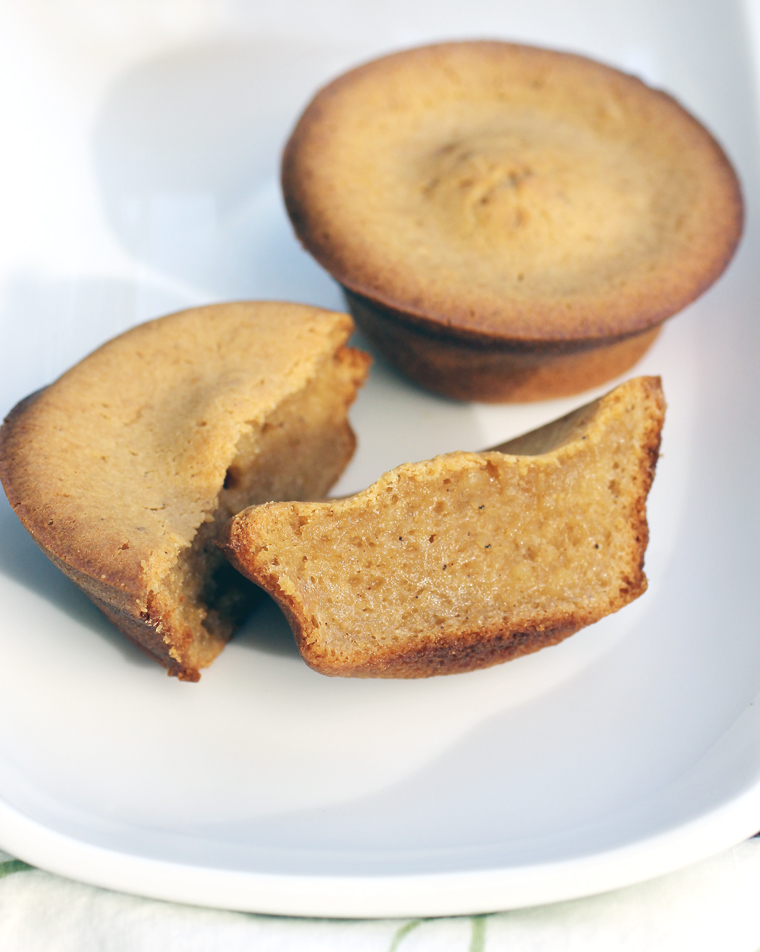
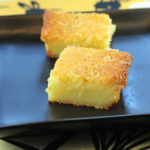
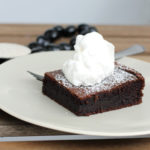
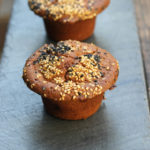
I need to drop by and take some off your hands! LOL.
That tender, canele-like middle sounds fantastic! And, I’ve never baked with mochiko. I definitely need to try these.
Instead of using a muffin tin, use the same recipe and line a pie tin with a banana leaf and you have bibingka.
CA: Oh, I didn’t realize that. I bet you could line it with pandan leaves, too, for a heavenly fragrance and flavor. Great tip!
Gosh, these look terrific! I’ve never had these — at least I don’t recall ever having them, and I would, wouldn’t I? — so I really need to get acquainted. And we have friends who can’t tolerate gluten, so perfect recipe for them. But we’ll really make them for ourselves. Thanks!
Thanks!
i’m so obsessed with brown butter! i haven’t it in this particular application (i’ve never had this particular application at all!), but i’m sure i’d love it!
Definitely a great treat!
is there anything you can sub the evaporated milk for? we have a dairy free issue (though butter is okay). any ideas?
Hi Genevieve: You could try coconut milk. I have seen other butter mochi recipes that use coconut milk, some with a blend of that with evaporated milk. I’m guessing you could use either all coconut milk or even a mix of coconut milk and something like almond milk.
I have made these many many times now. And actually make them in mini muffin tins and the recipe makes about 70 mini muffins. I freeze them and warm them up when I eat them. Everyone tried love them. Based on informal taste tests, people actually like them reheat better than freshly out of the oven. Most common reason is that the center is spronger after reheat than freshly out of the oven. Don’t get me wrong, fresh is very good too. I also let the batter sits for at least a few hours in the fridge before baking. I found the flour absorb the liquid better and the muffin comes out with smoother texture.
Holly: That is so interesting! I am definitely going to try letting the batter rest in the fridge before baking. I do that with cookie dough and it always comes out better. So I imagine this would also be a great technique for the mochi muffins. Thanks for the great tip.
I was wondering if you know if I can try this recipe in a pan instead of making them into muffins?